Ever considered traveling to Iran for hiking? Did you know that the nation is home to Asia’s tallest volcano (5610m) as well as a sizable number of peaks with +4000 and +3000? Alborz and Zagros, Iran’s two major mountain ranges, provide a variety of peaks and paths to suit the preferences and skill levels of mountaineers of all levels. Iran is a wonderful mountaineering destination because of its amazing peaks and quite an affordable cost of mountain climbing. Additionally, Iran’s mountains provide breathtaking hiking trails and magnificent large walls.
Here is our list of 11 awesome mountain treks in Iran.
Zagros Mountain’s Highest Peak
The Zagros Mountains, which we will learn about as Iran’s second major mountain range, stretching from the northwest to the southeast of the nation and are a great place to trek Iran. People have lived in the Zagros Mountain range, which contains many sub-ranges, for a very long time.
Paleolithic settlements by humans may be seen in the caves of the Zagros area. Additionally, many Iranian tribes and nomads have always made the Zagros region their home. The region experiences a semi-arid temperate climate, with summers that are extremely arid and bitterly cold winters that experience temperatures that can be fatally low. Between 400 millimeters and 800 millimeters of precipitation fall on average each year, primarily in the late winter and early spring.
The main forms of flora found in the Zagros ecoregion include temperate broad-leaved forests with oak and pistachio trees predominating, as well as extensive ground coverings of steppe vegetation. The most significant plant species in these habitats is the Persian oak. The Zagros Mountain ecoregion is home to a variety of uncommon and secretive animal species, including leopards, martens, wild goats, wolves, brown bears, and mongooses, as well as eagles, partridges, bustards, and black vultures.
The five endemic lizard species that also reside in the Zagros Mountains are a part of this bunch. The Zagros Mountains are home to several “endangered” species, including the Persian Fallow Deer and Basra Reed Warbler. You may see the Lesser Spotted Eagle and the Golden Eagle breeding in the hills and mountains of the area.
Stunning Mount Sabalan
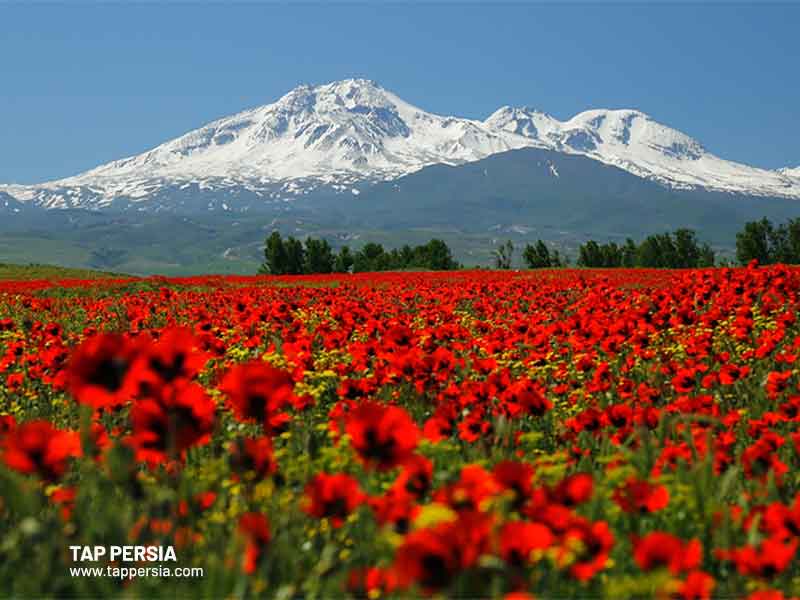
Sabalan would be the following summit that the Iran Trekking tour would provide. A very new experience awaits you when you travel to Sabalan. In order to begin our tour, we first go to Ardebil, which is located in northwest Iran. Sabalan itself is quite different from Damavand, and it is significantly cooler than Tehran.
In accordance with popular belief, Zaroastra, an Iranian prophet, began his spiritual journey after ascending from Sabalan. The natives and nomads still hold this particular mountain in the highest regard; they even use its name as a guarantee that they will keep their word.
Reverting to the natural world, Sabalan might be regarded as one of the most generous and surprising mountains. The greatest Iranian hot springs may be found in the cities of Sarein and Shivan Darreh, which are situated on the slopes of Sabalan. The discovery of a lake in the Sabalan crater will surprise you. This special place to trek Iran is worthwhile because of this breathtaking vista. Wintertime freezing of this lake really enhances its attractiveness.
Talesh through Soubatan Village

Talesh is a district of Iran’s Gilan province, one of the regions that are adjacent to the Caspian Sea. In comparison to Damavand or Sabalan, the Talesh Mountains are simpler to climb, and the view is also distinct. Instead of icy peaks or a lake in a crater, the Talesh Mountains, a subrange of the Alborz Mountains, will offer you lush woods on the mountain slopes and incredible meadows. With a band of Triassic and Jurassic rocks in the southern regions and a strip of Paleozoic rocks in the northern portions, both in a north-west-southeast orientation, the Talish Mountain Range is mostly made up of Late Cretaceous volcano-sedimentary deposits.
Forests from the lowlands and the mountains cover the Talysh Mountains. The area is a component of the ecoregion known as the Caspian Hyrcanian Mixed Forests. In the past, the Talysh Mountains were home to the Caspian tiger.
Climbers will agree with non-climbers in praising a wonderful camping trip in the Talesh Mountains, which is a requirement on agency-offered tours for tourists to trek Iran.
Beyond the mountain treks, Iran offers scenic routes that captivate the soul of every traveler. One such route is the Chalus Road in autumn, providing a mesmerizing journey through the heart of the Alborz Mountains adorned with the vibrant hues of fall.
Dena Mountain

The Dena Mountains in southern Iran are an excellent place to go multi-day hiking because of their length, variety of peaks and pathways, the quantity of water, and distinctive vegetation. The massive Dena Mountains, which span 80 kilometers, are located in the heart of the Zagros Mountains. From northwest to southeast, this mountain range, with more than forty +4,000 peaks, may be found. Originally known as Dehnar or Deh Anar, this subrange’s name refers to a pomegranate-growing town, the remnants of which may still be seen on the plains of the Dena Mountains.
The Dena Mountain Ranges encompasses the southeast, northwestern, central, and bypath regions. There are multiple peaks above 4,000 feet in each of these areas. Here is where Ghash Mastan, also known as Bizhan 3 (4300m), is the highest peak in Dena. Hoz Dal, Kalkharman, Ghalam, Morgol, Pazan-e Pir, and Bizhan 1&2 are the other high peaks in the Dena Mountains. Hoz Dal is best liked because of its distinctive path and better-equipped shelter. Multi-day Iranian treks that include scaling many peaks calls for advanced skills and a thorough understanding of the routes. The animal and plant life of the Mountains, which have given Dena the designation of a protected National Park, is another attraction. On this tall Iranian mountain, there is also plenty of water, and in the spring and early summer, there is a spring or fall on every corner. On Dena, which also has dangerous winters, late spring to early summer are the best times to go trekking.
Zardkouh, a Chance to Meeting the Bakhtiari Tribe

The Zard Kuh Mountains are a unique hiking location because they include a number of peaks, unusual vegetation, and flowing springs on one side, and lovely Bakhtiari nomads who camp there in the summer on the other. Your adventure will be made more interesting by their undeveloped, uncomplicated way of life and kind friendliness. The many peaks of the Zard Kuh Mountains, which are a part of the Zagros Mountains in southwest Iran, are unquestionably among the best mountains in Iran. The most well known of its many peaks are Kolonchin, Haft Tanan, Shah-e Shahidan, and Cheri.
With a height of 4221 meters, Zardkouh is the tallest peak in Iran’s Chahar-Mahal and Bakhtiari regions. Its name, which translates to “Yellow Mountain,” refers to the summit’s yellow tint, which is a result of yellow mud under its typically snow-covered top. On the western side of the mountains, there are steep valleys and tall cliffs, which make winter ascents particularly difficult for trek Iran.
Oshtorankouh, Azana, Lorestam

One of the tallest parts of the Zagros Mountains is the Oshtorankuh mountain range, which is located in Lorestan Province’s east. High, snow-capped peaks, protracted, deep valleys, perennial rivers, a variety of plant and animal life, and terraced towns are some of Oshtorankuh’s unique features. From a distance of 100 kilometers away, Oshtorankuh’s splendor and majesty are evident. Its eight +4000 summits, which line up in a row like a camel caravan, give it the nickname Camel Mountain. Sanboran, the tallest mountain in Oshtorankuh, rises to a height of 4150 meters. A gem may be found at the summit of Iran Mountain, the Gahar Lake. This lake, which is among the most beautiful tourist destinations in the country, is known as the “Signet of Zagros.” In addition, several rivers originate there.
To go on a climbing excursion on Oshtorankuh, travel to Tian Village in the Lorestan Province district of Dorood. The base camp, Golgol Shelter, or Chal Kabud Hut is where you will spend the night, depending on your timetable (nearer to the summit). Summer and late spring are the best seasons for hiking on this mountain. Snowy and chilly winters are a problem.
Sahand Mountains; The Bride of Iran’s Mountains
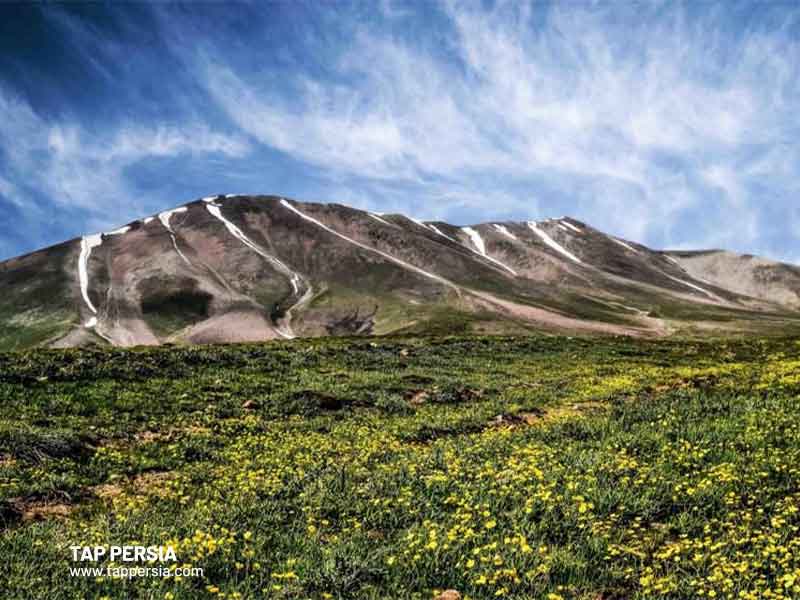
Iran offers more climbing opportunities than simply these two mountain ranges, which we have explored in this article. There are also smaller ranges in various locations that guarantee a breathtaking view and an exciting climbing adventure for people who enjoy the outdoors.
One of these is the Sahand Mountains, which proudly bears the moniker “the bride of Iran’s mountains” because of its perennially green slopes and a profusion of flowers. With more soil than stone, Sahand Mountains have a texture that differs the most from that of the Alborz or the Zagros. The Sahand Mountains are now simpler to climb. Climbers who have already done it claim that because of the beauty that this region of Iran’s environment bestows upon its guests, the simpler climbing sessions include happy camping experiences. This is definitely a great place to trek in Iran.
Myths of Damavand
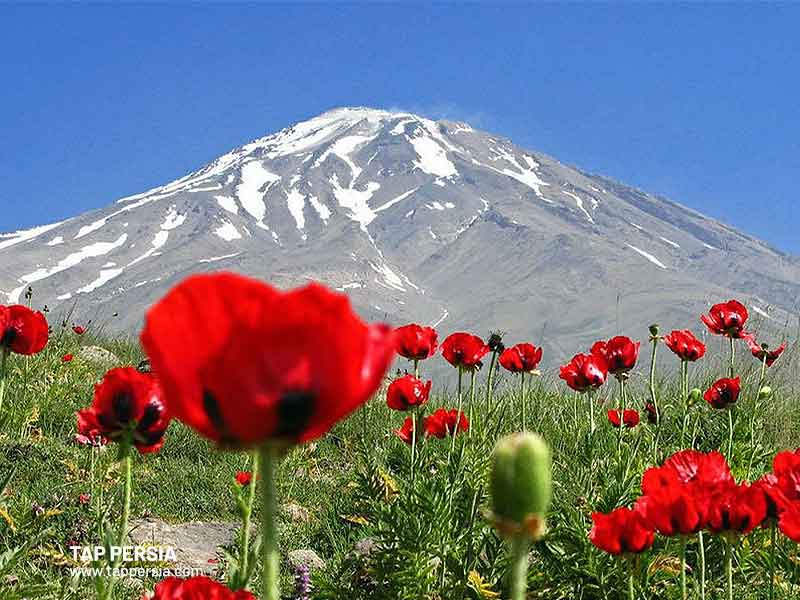
With a height of 5671 meters and a snow-covered crater, Damavand is Iran’s highest peak. It is Asia’s tallest dormant volcano and smoke may be seen coming from its southern flank. Many Iranian hikers consider Damavand to be their final trek Iran goal, so if you love the outdoors, you should not pass up this opportunity. The routes to Damavand and the foothills of the Alborz Mountains are so different and gorgeous, and although the snowy crater is lovely and the view you will ultimately get when you reach the mountaintop is magnificent, both are equally stunning. The journey is what makes the trip worthwhile, not just the summit, in the words of the countless climbers who have shared their accounts of ascending Damavand.
You might be curious about the meaning of Damavand and what it represents in Iranian culture and literature. In both poetry and play, Damavand has been utilized frequently. It represents majesty, strength, and tenacity. The three-headed dragon Ai Dahka is said to have been bound inside Mount Damavand and would stay there till the end of the world in Zoroastrian literature and mythology. Damavand has earned the honor of being referred to as Iran’s roof, making it a great trek Iran to experience.
Alam Kuh
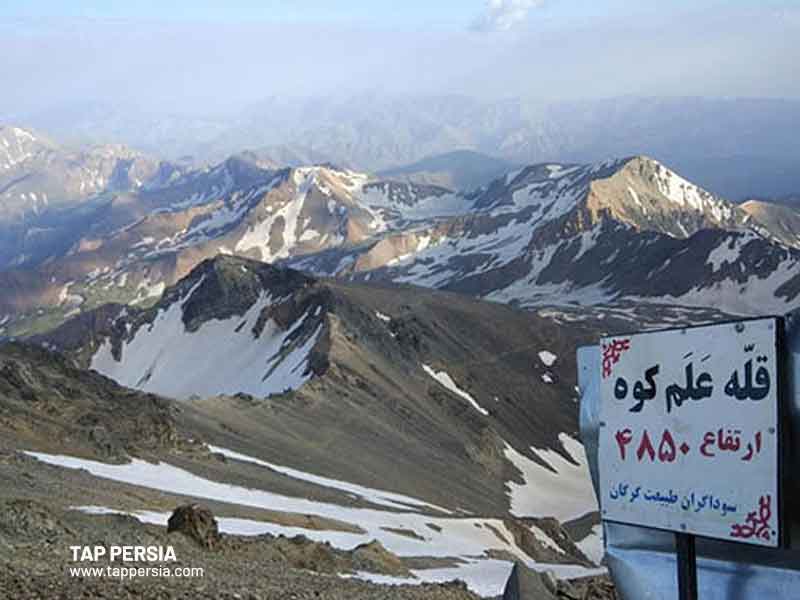
Alam Kuh, Iran’s second-highest peak (4850m) is found in the beautiful northern region of Tekht-e Soleyman. There is a sizable large wall on Alam Kuh’s northern face that is home to some of the most challenging and technically challenging rock climbing routes in the nation. Alam Kuh has earned the status of Iran’s K2 among climbers because of its wall.
Alam Kuh has become a fantastic hiking and wall-climbing destination for mountaineers of all preferences and abilities to trek Iran because of the availability of a range of routes there. Alam has two different types of ascending paths: hiking routes and rock climbing routes. Climbers on rocks could choose the major wall or flank routes. There are two ways to go to the top of these Iranian Mountains that hikers can select from Hesarchal and Siahsang. The most enjoyable approach to tackling Alam is the picturesque Hesarchal, which is really the southern face route. In reality, one of Iran’s most hard hiking routes is the more tough Siahsang trail. This route is only appropriate for very experienced mountaineers because of the severe scrambling demand. Siah Sang Route Trekking Guide and Hesarchal Route Trekking Guide both offer climbing guides for these climbs for tourists to trek Iran.
Alamut Valley and Assassins Castle
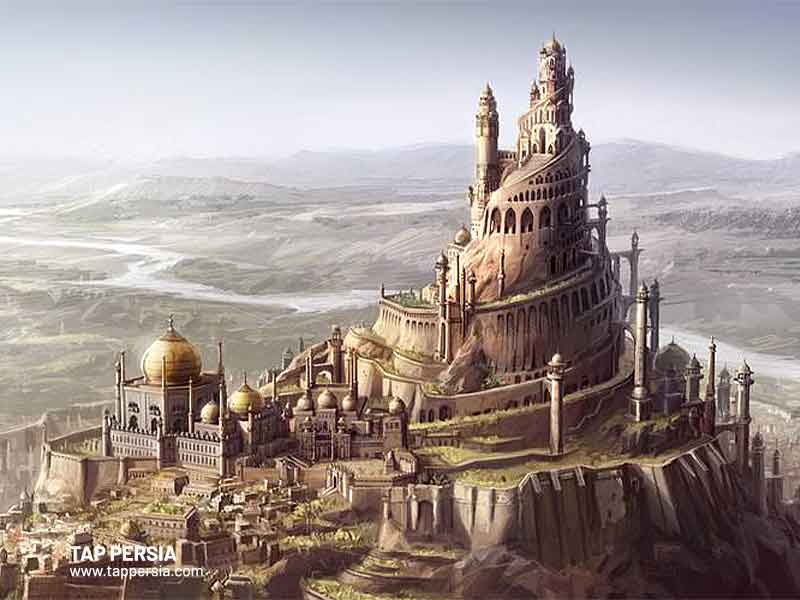
One of the most spectacular events of the Middle Ages was the rise and fall of the Assassins’ authority. The first member of the group was an adventurer by the name of Hassan Sabbah, also referred to as the “old man of the mountains.” He was exiled from the Persian court and sought sanctuary in the gloomy Alburz mountains, which form a vast arc surrounding the southern end of the Caspian Sea. Hassan Sabbah came upon the Assassin valley, a vast fertile chasm in the center of the Sierra, which climbs skyward like rocky cliffs on either side of the secret valley while traveling with his little band of retainers in these friendly mountains.
Hassan Sabbah gave himself the moniker Sheik el Jebel, meaning Lord of the Mountains. Hassan Sabbah was not your typical person, leading his adherents to think that their Sheik was in fact one of the Prophets endowed with the power to grant devoted people immortality. The Caliphs in Cairo and Baghdad may be terrorized only by mentioning the name “Hasan-e-Sabbah.” His stronghold, Alamut Castle, was an impregnable castle, but the Assassins possessed several dreadful fortifications scattered around the Alborz Mountains. Alamut is now considered a fantastic day trip. Visitors can depart Tehran early in the morning for Qazvin, over the first ramparts of the Alamut a few hours later, and then travel up-valley to arrive at Gazorkhan in time for a late lunch.
The majority of visitors—almost entirely Iranian—view the stunning mountain-rimmed valley as a perfect weekend getaway. The valley’s floor and sides are dotted with villages and hamlets; cornfields and rice paddies fill the spaces between ravines, and irregular terraced plateaus ruffle the lovely undulating geography of the valley.
Sialan Mountain

For hikers who want to travel through lush forests, northern Iran also offers Sialan Mountain (4250m), one of Iran’s top climbs. Sialan, which is situated between the provinces of Mazandaran and Qazvin, stretches from East Alamut in the south to Dohezar Valley in the north. Sialan spreads to the stunning Daryasar Plain on one side and the fabled Alamut Valley on the other. Sialan may be climbed using a variety of routes. The first path is the longest but the most scenic and rewarding, beginning in Esel Mahalleh Village. The second path starts in the town of Haniz and travels north. Additionally, from the neighboring peaks, there are a number of additional ridge routes that will take you to the summit. Depending on the path you take, you may design your journey so that you can take in the splendor of the Dohezar Forests or Alamut Valley (south) (north). If the sky is clear, you can view Takht-e Soleyman and Haft Khan in the southeast and in the east, and south-east, Khashchal Peak and Somamos Peak in the west, and Shah Alborz Mount Alam from the summit of Sialan Peak in the southeast.
The area is frequently covered with snow during the colder months, making it extremely tougher to get to the summit. You can see the mountain at its most beautiful in the spring. Your energy levels are increased by the lush vegetation and lovely flowers so you can reach the peak.
Can You Hike in Iran?
Yes, many people find hiking in Iran to be one of the most appealing sports, especially given that the nation is covered with mountains, several of which rise beyond 4,000 meters. Weekend hikes are popular with Iranians.
Where Can I Hike in Iran?
Iran has various locations where people may go trekking. In Iran, the majority of experienced hikers favor the remote interior Alborz Mountains. The greatest hiking trails in Iran may be found on the northern side of Tehran, where there are a few national parks and protected regions.




Comment (0)